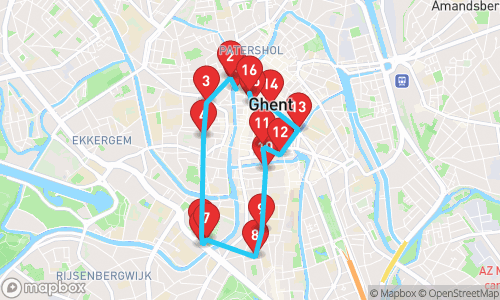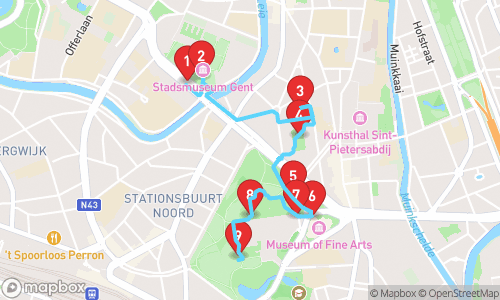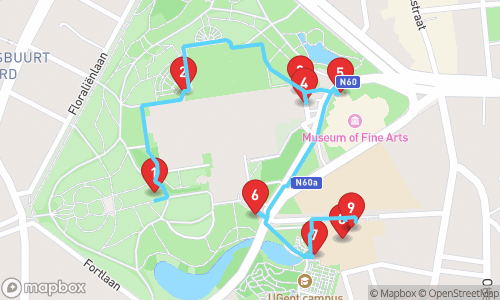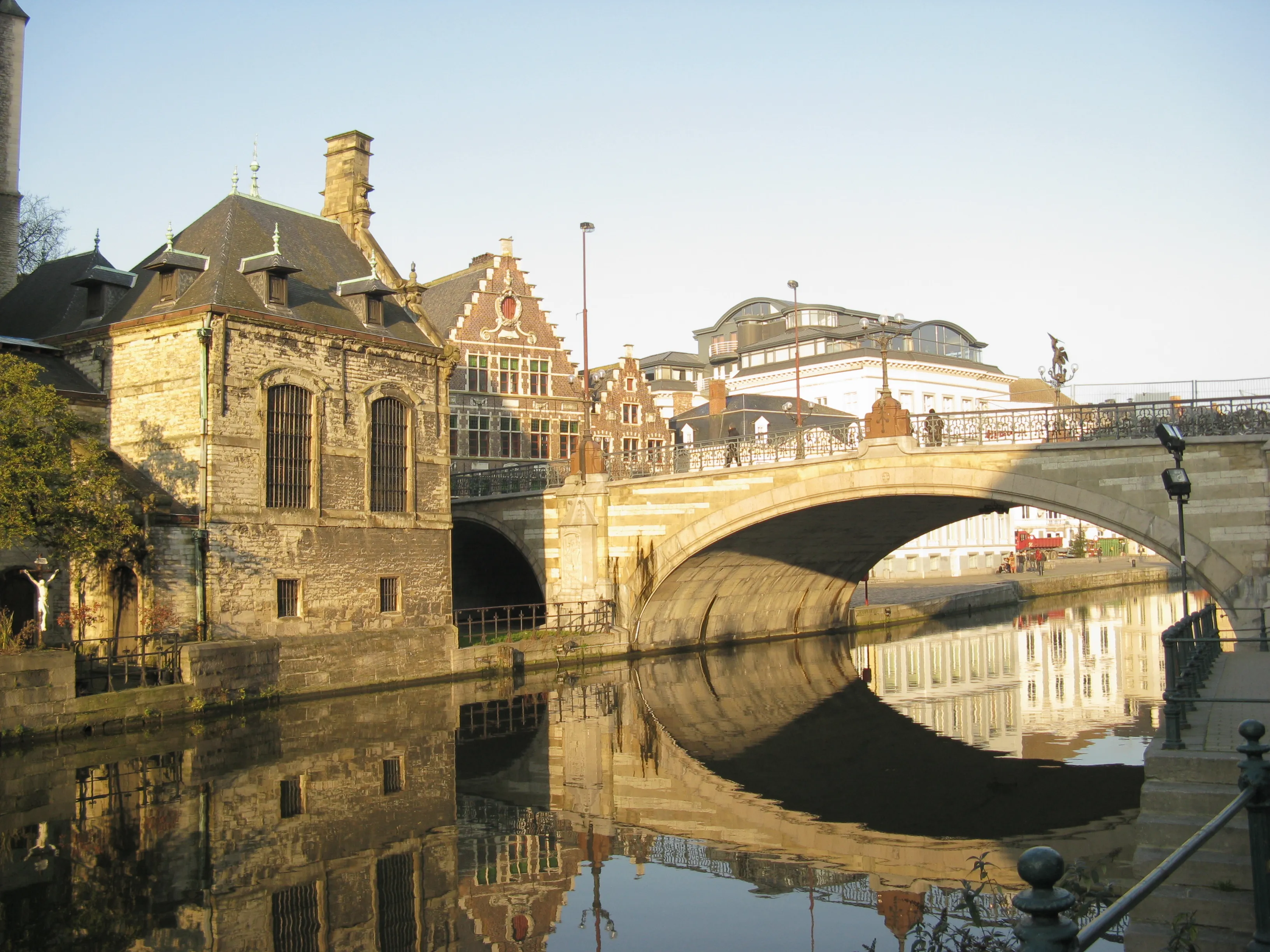
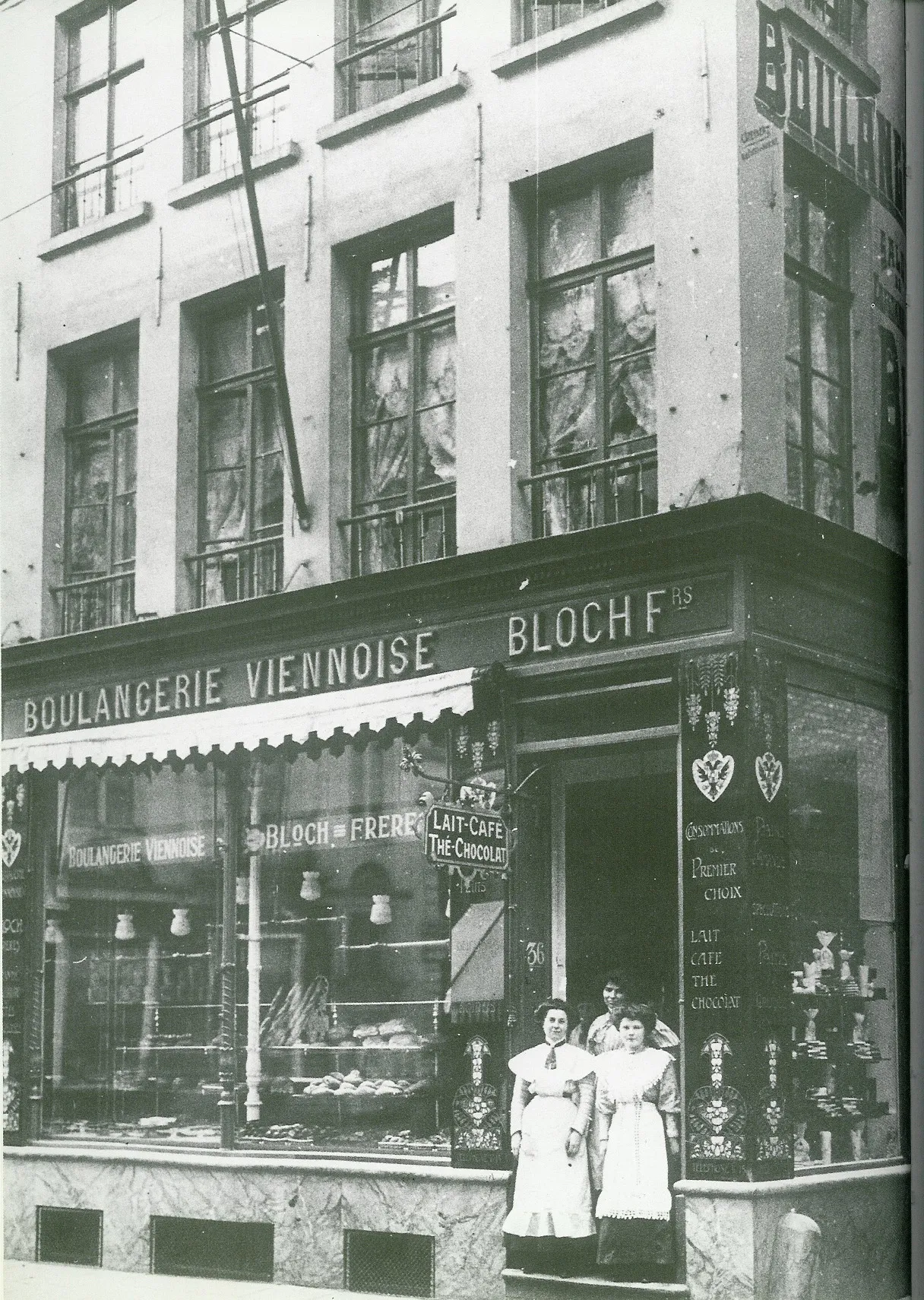
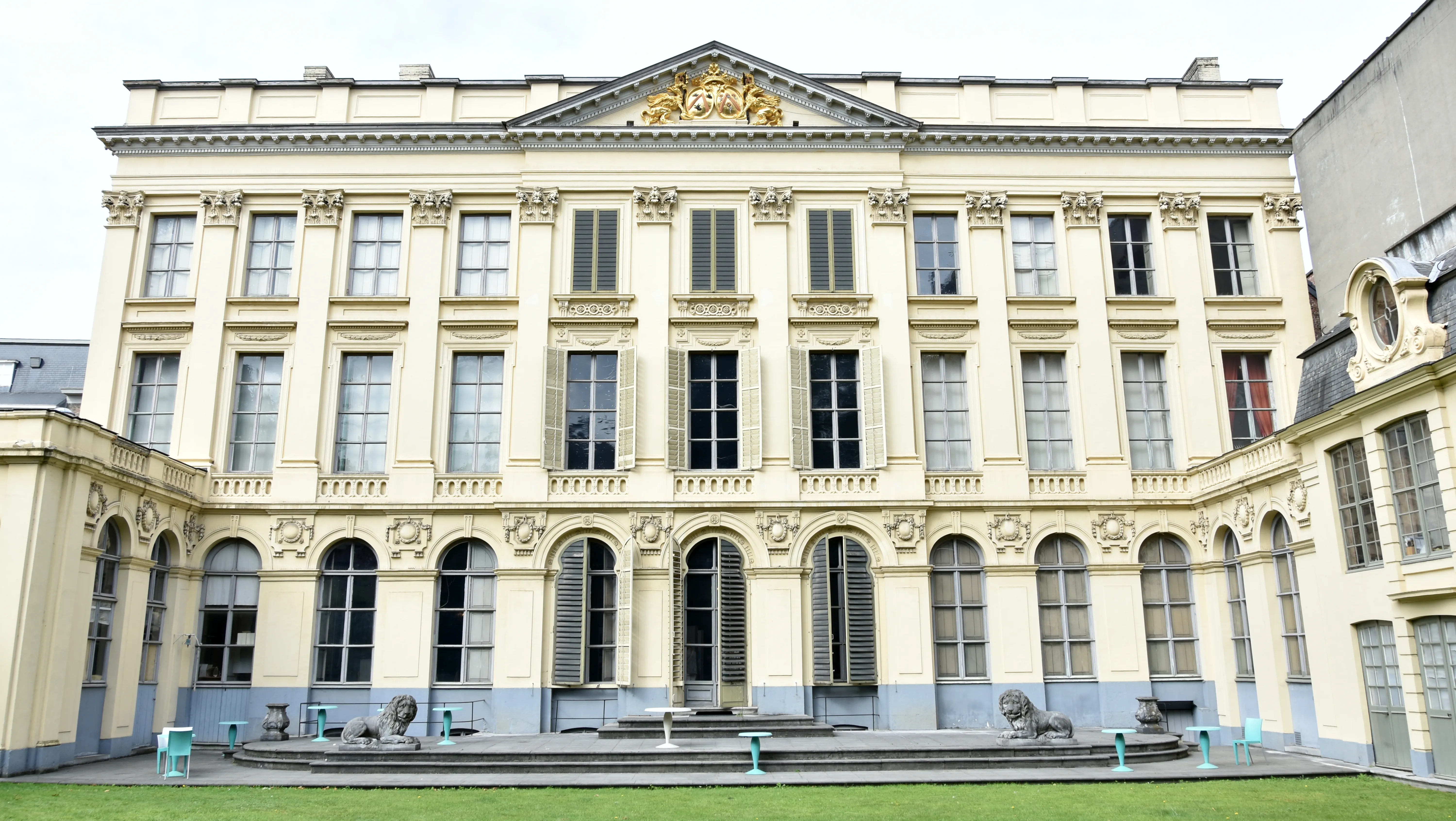
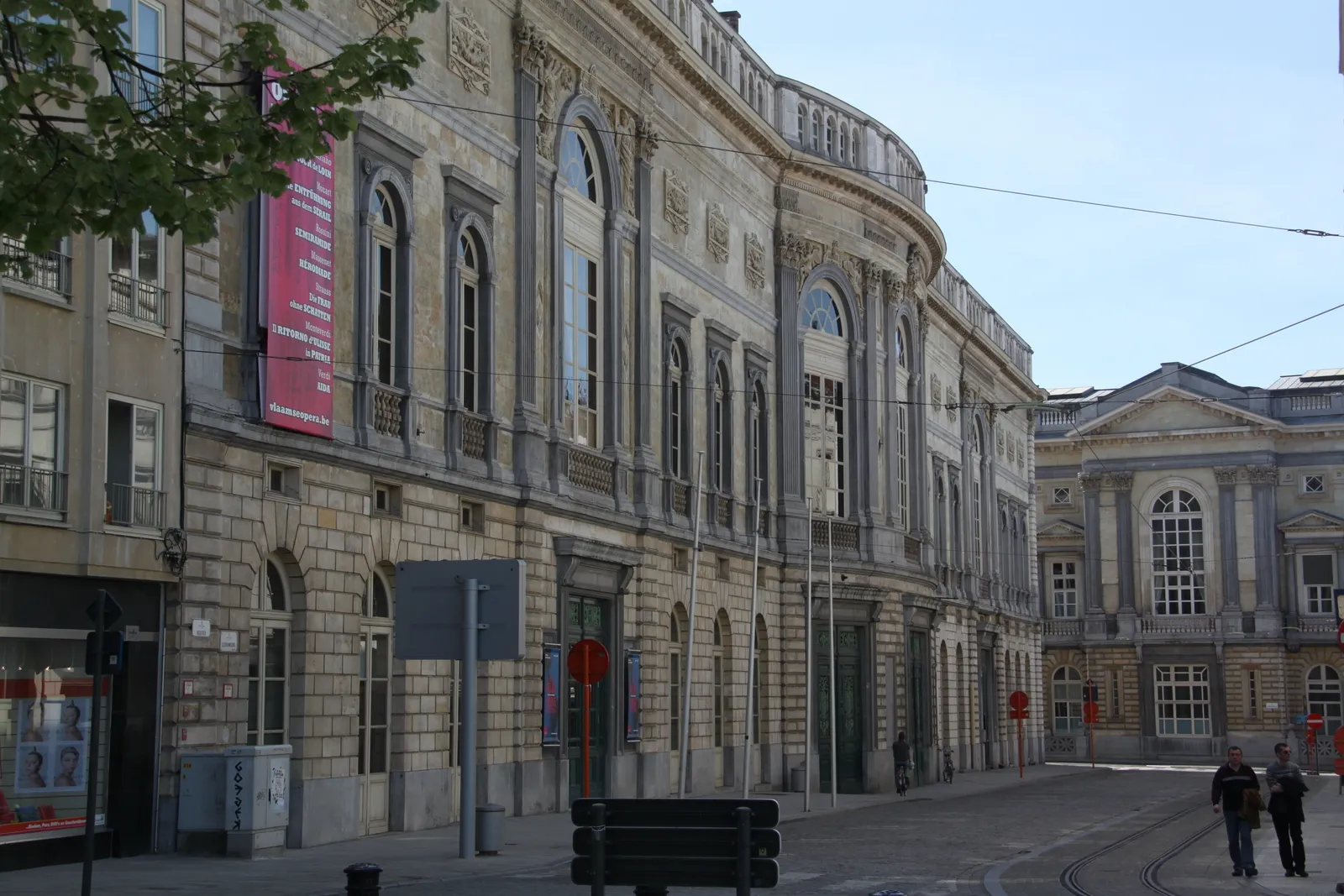
Genter Geschichte und Pracht: Ein Spaziergang durch die Zeit

Tour Guide
Jenny Multilingual
Welcome to Gent! On this GPS guided audio tour, we will visit 20 stops on a route of 4.46km. This tour focusses mainly on history.
Locatello is an app where you can generate personal audio guided tours. Set your preferred distance, guide, language and theme, and a guided tour is created on the spot.
Walking Time
Distance
stops
Language
Tour Stops

Sint-Michielsbrug
A historic stone arch bridge in the heart of Gent, spanning the Leie River, was built between 1905-1909 and designed by architect Louis Cloquet. The bridge is a prominent landmark offering stunning views of the Gras- and Korenlei, as well as the city's iconic towers. Since 1983, it has been protected as a monument.

Bakkerij Bloch
A historic bakery, Bakkerij Bloch, was a well-known bread and pastry shop in Gent, Belgium, operating for almost 109 years until it closed in 2008. The shop reopened in 2020 in a new location, retaining its traditional expertise and charm.

Hotel d'Hane-Steenhuyse
Hotel d'Hane-Steenhuyse is an 18th-century grand townhouse in Ghent, decorated with paintings by Petrus Norbertus van Reysschoot, Peter Paul Rubens, and others.

Royal Opera
A historic opera house, the Royal Opera, was established in Gent, and has been rebuilt and expanded over the centuries, with the current building dating back to 1837.
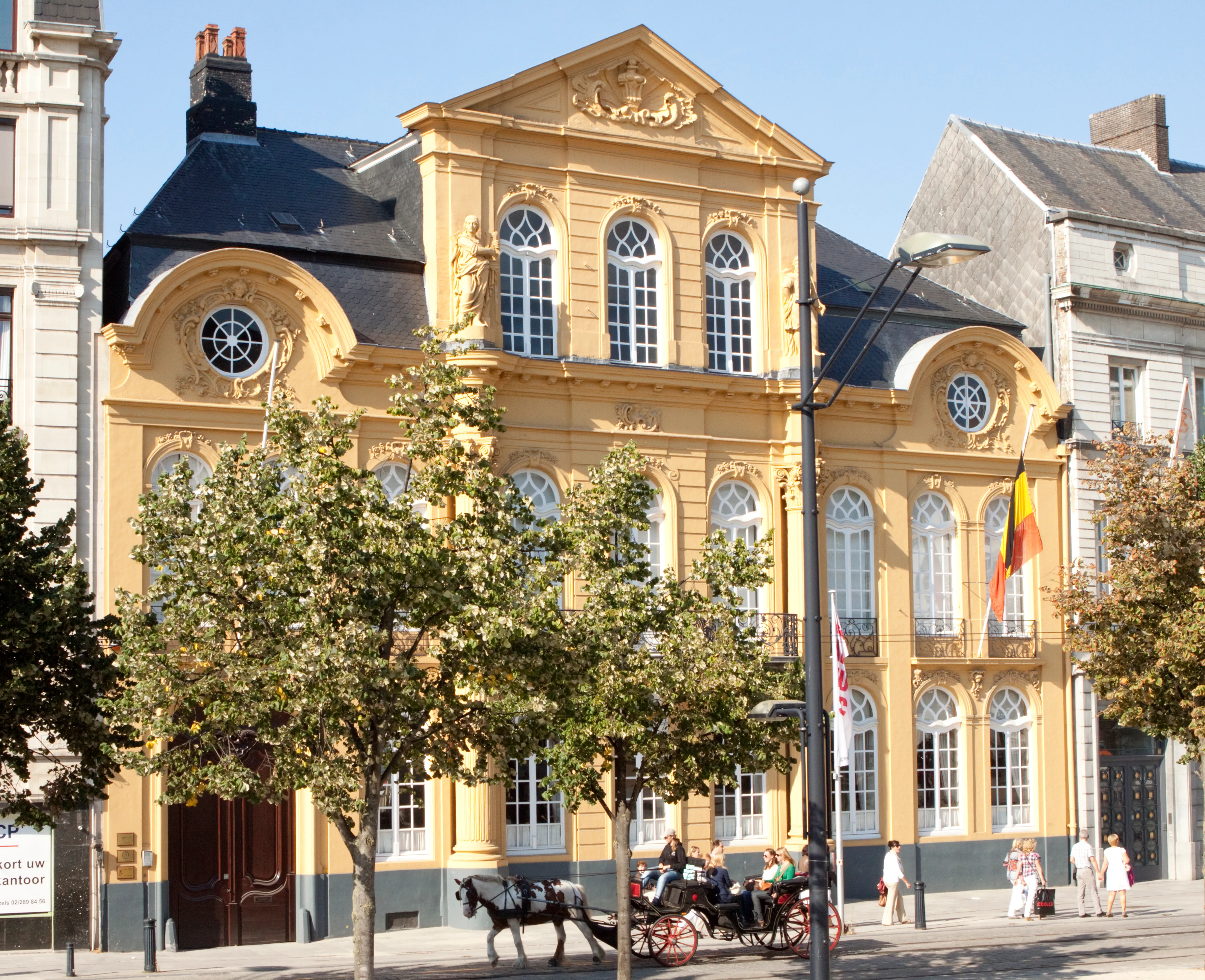
Hotel Falligan
A historic building, Hotel Falligan is a Rococo-style townhouse constructed in 1755, featuring Corinthian columns, hand-forged balconies, stylized consoles, and ornate blazons.
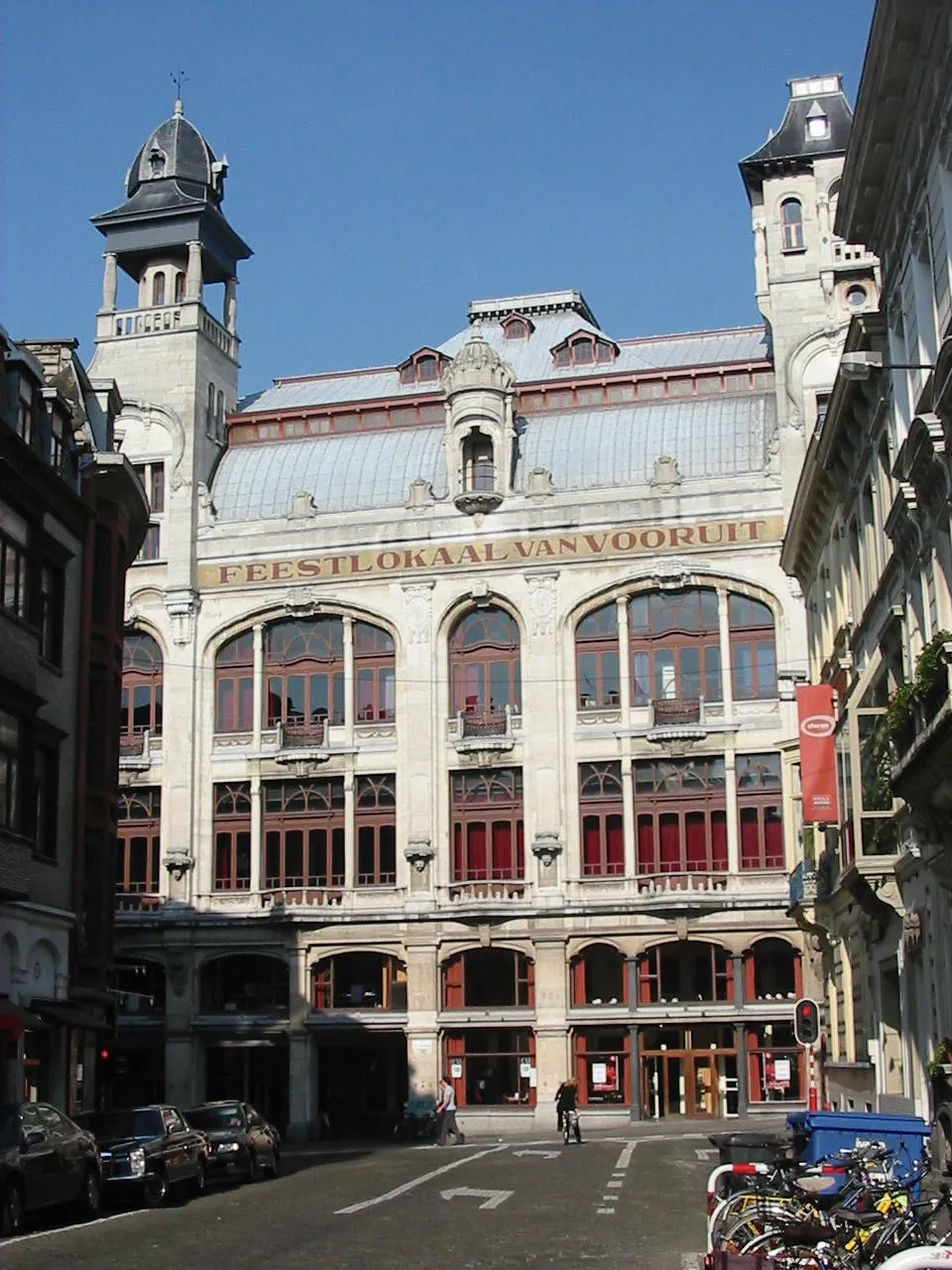
De Vooruit
A people's house, designed by Ferdinand Dierkens between 1911 and 1914, this historic complex was a symbol of the socialist movement in the interwar period and is now a cultural center hosting concerts, parties, and cultural events.
Audio Preview
30 sec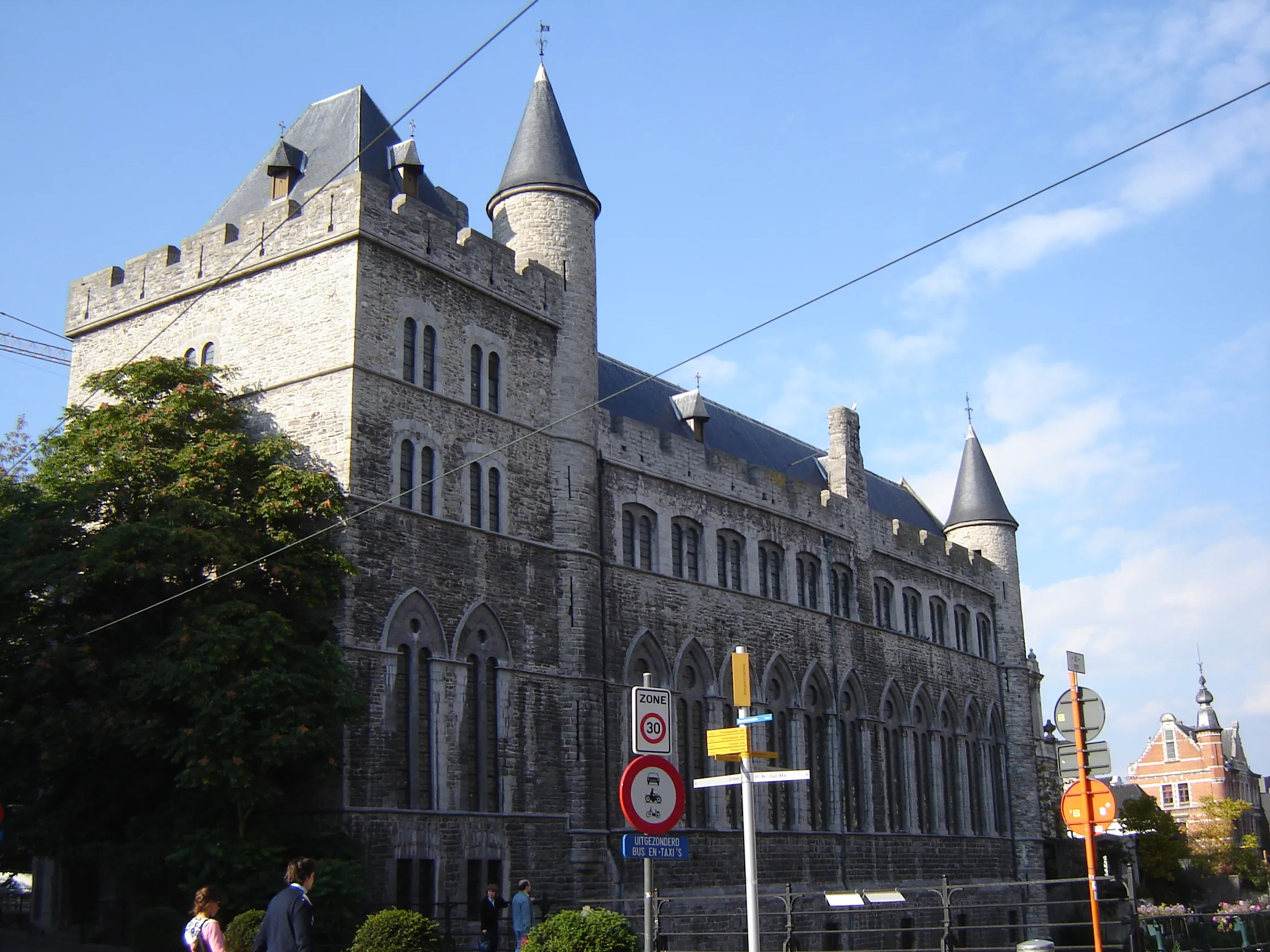
Geeraard de Duivelsteen
A 13th-century gothic architecture building, previously a château, ballroom, armory, monastery, and prison, it has served various purposes over the centuries.
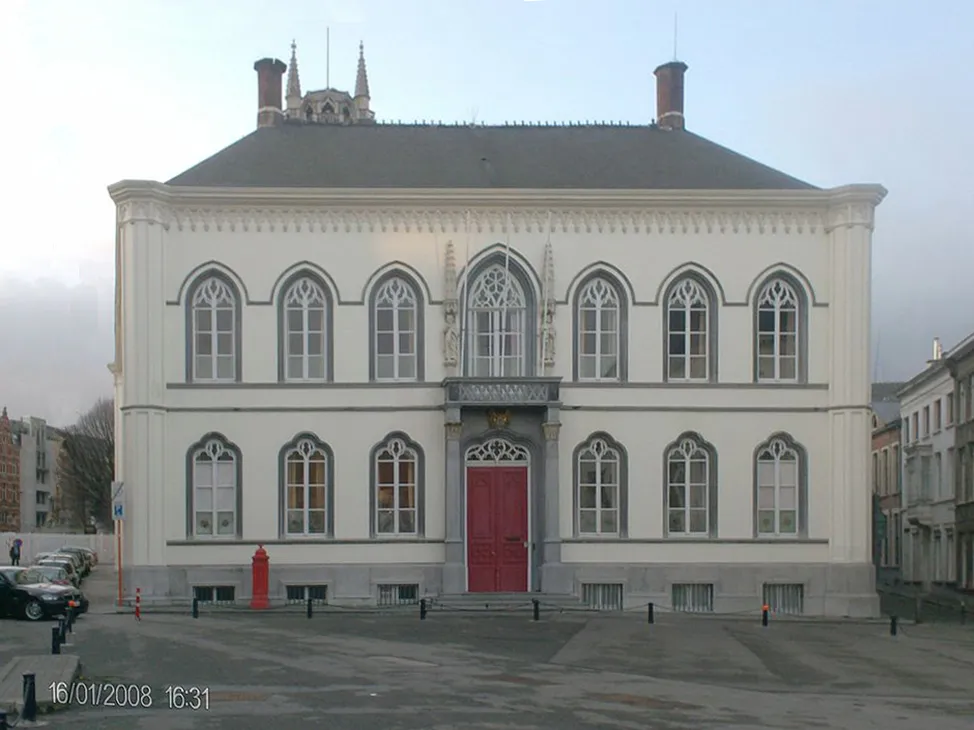
Bisschoppelijk Paleis Gent
A palace built in the neogotique style, serving as the administrative seat of the Diocese of Ghent and the residence of the bishop. It has been a protected monument since its construction in 1845.
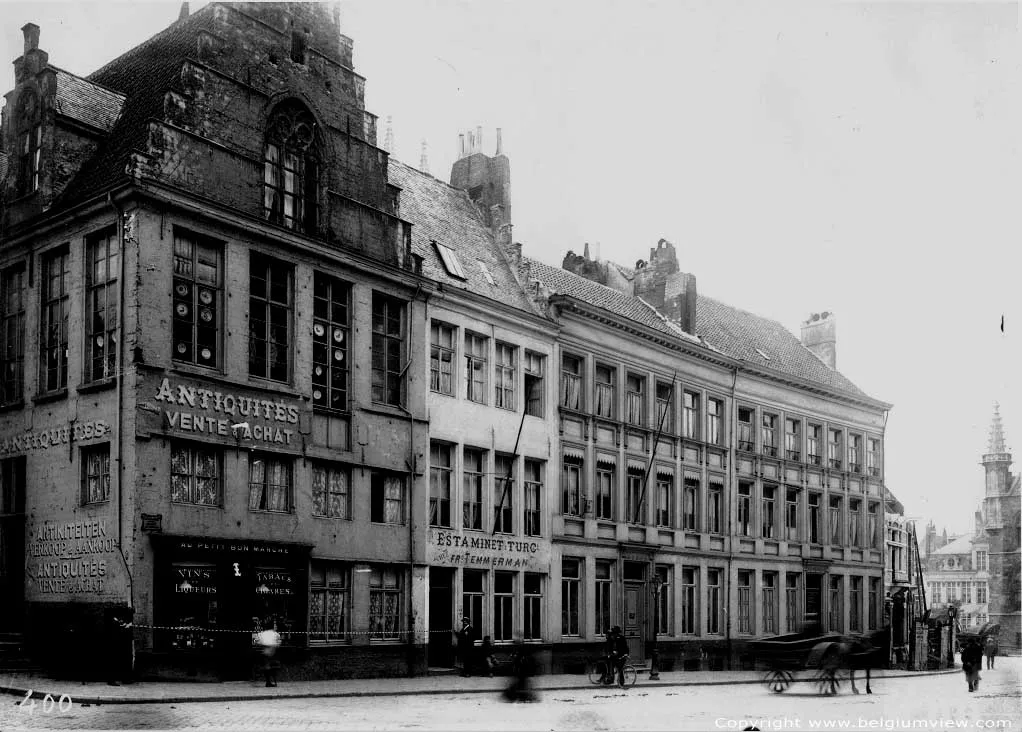
Sint-Jorishof
A historic building in Ghent, originally the court of the Crossbow Society, now functioning as a restaurant, brasserie, and event space after renovations.
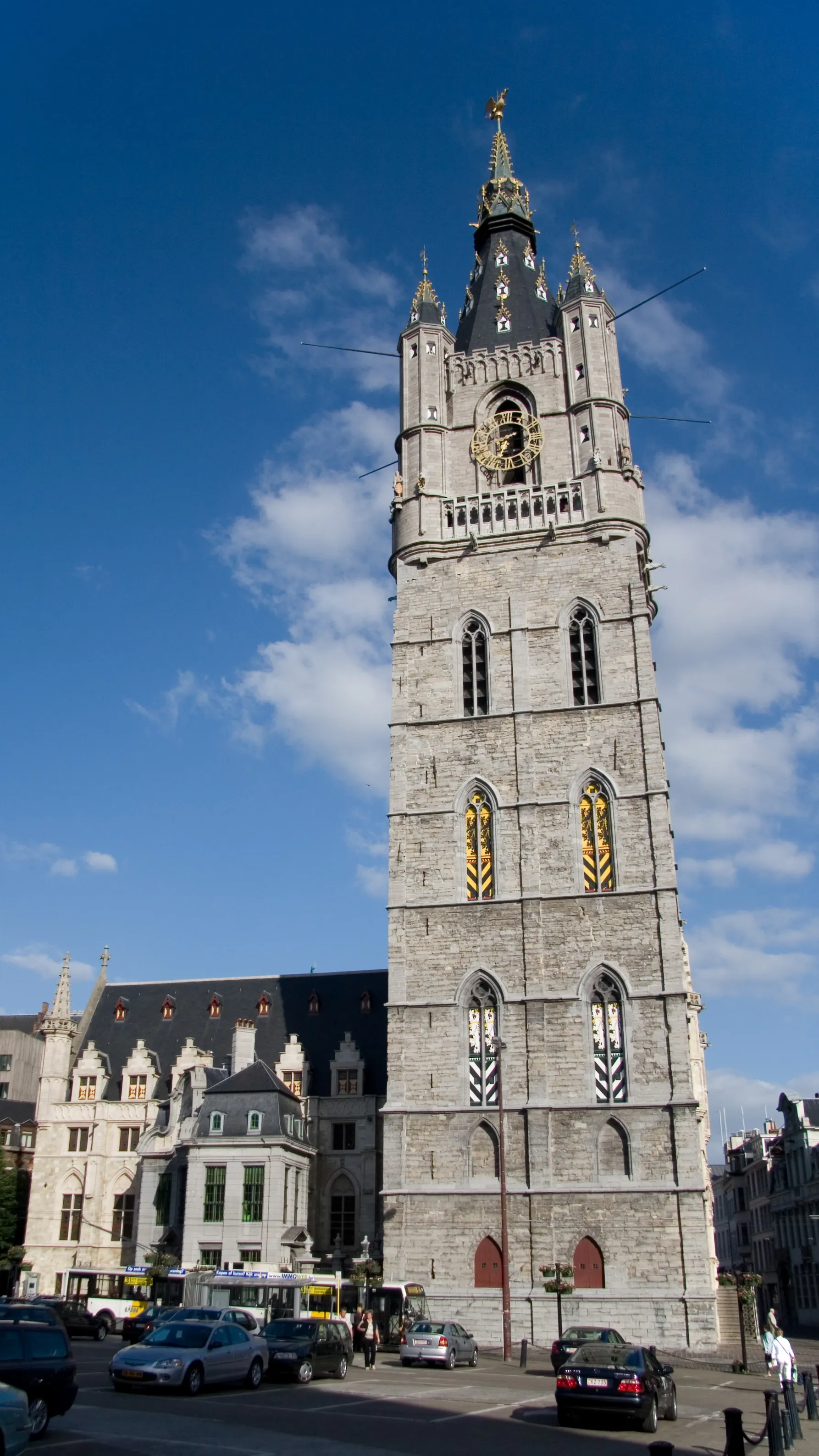
Belfry of Ghent
A medieval tower standing 91 meters tall, the Belfry of Ghent is the tallest in Belgium and part of the UNESCO World Heritage Site, Belfries of Belgium and France.

Fountain of Kneeling Youths
A sculpture by George Minne, the Fountain of Kneeling Youths represents five nude adolescents, bowed in contemplation, symbolizing the eternal condemnation to meditation by fear of life. Fragile and introverted characters convey a heavy emotional charge.
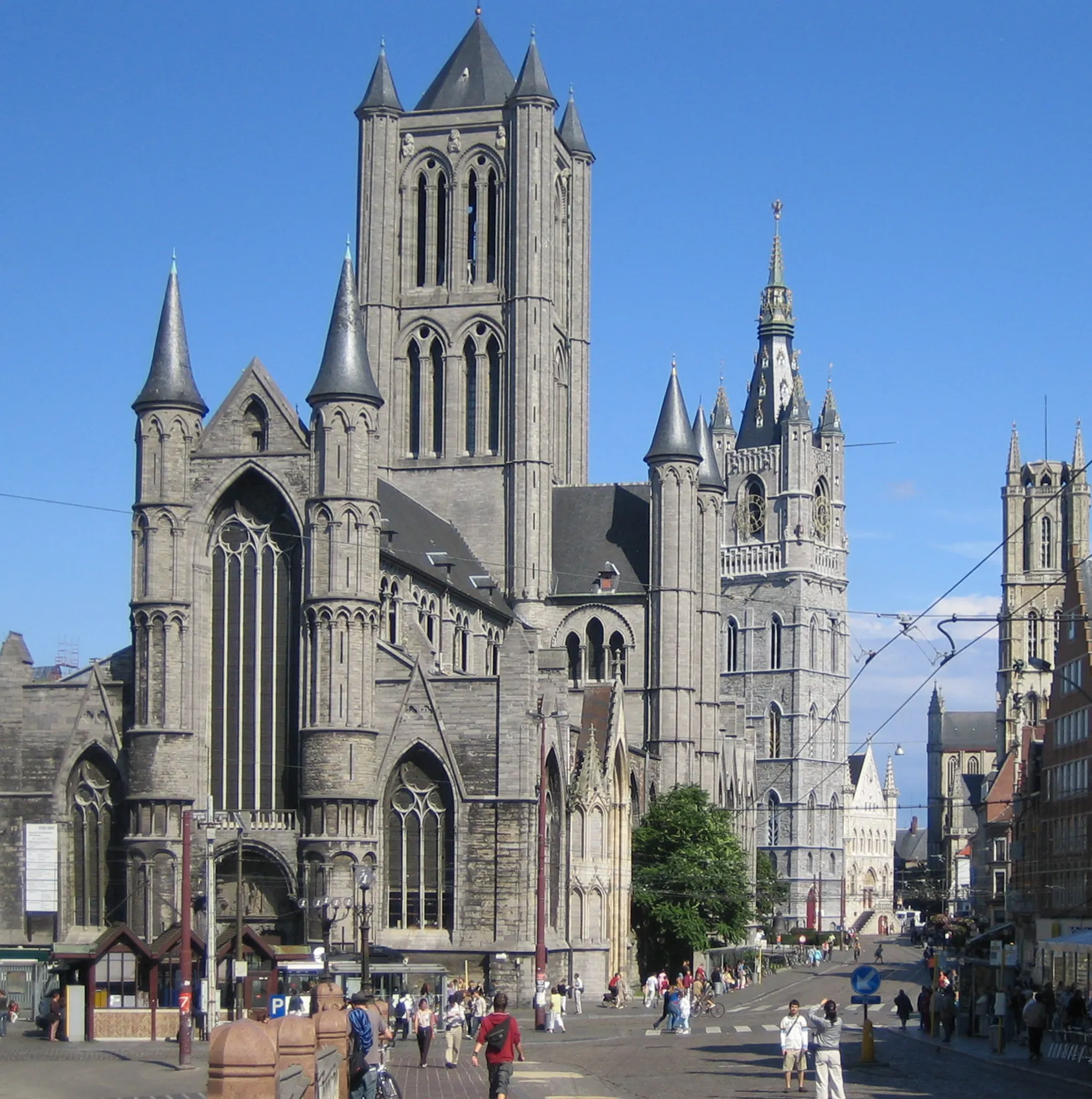
Saint Nicholas' Church
A historic church building dating back to the early 13th century, showcasing the Scheldt Gothic style with blue-gray stone, single large tower, and slender turrets.
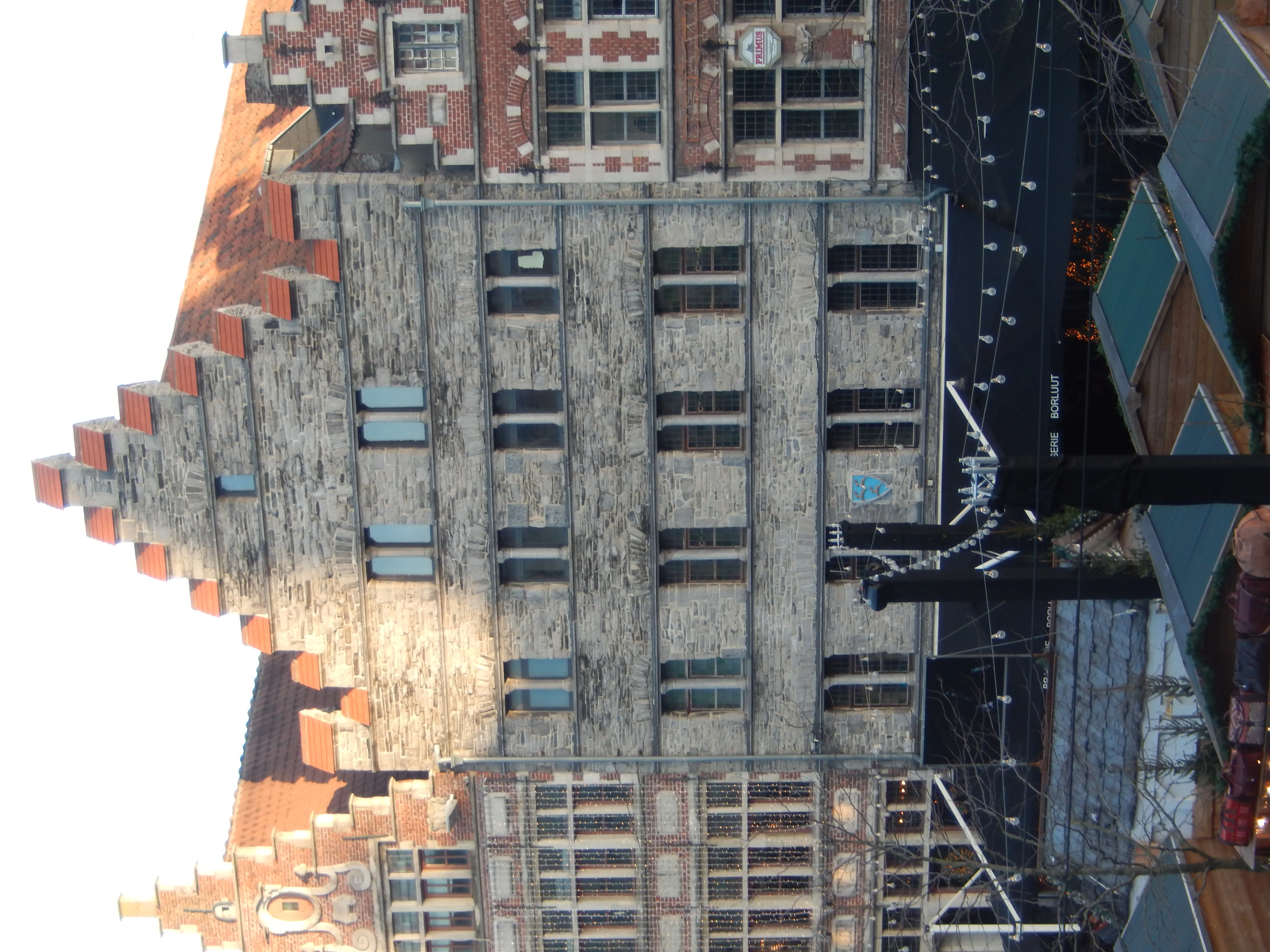
Borluutsteen
A medieval house built around 1175 from blue-grey limestone from Tournai, featuring a trapezoidal floor plan and a unique trap-gable facade with horizontal waterline decorations.
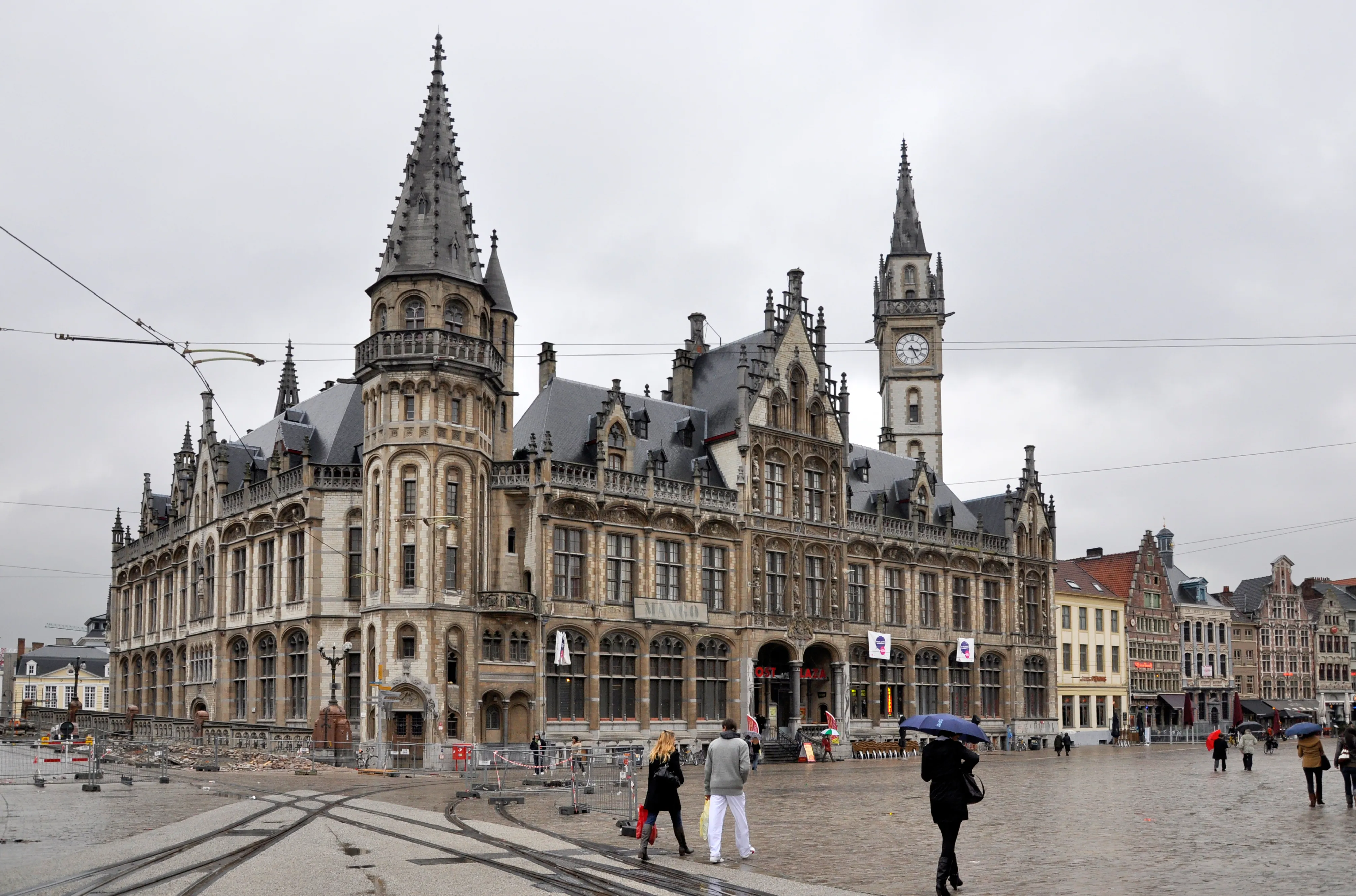
Old Postoffice
A monumental post office building featuring eclectic architecture with neogothic and neorenaissance influences, adorned with over 100 ornate figures, symbols, and coat of arms, representing Belgium, its colonies, and the five continents.
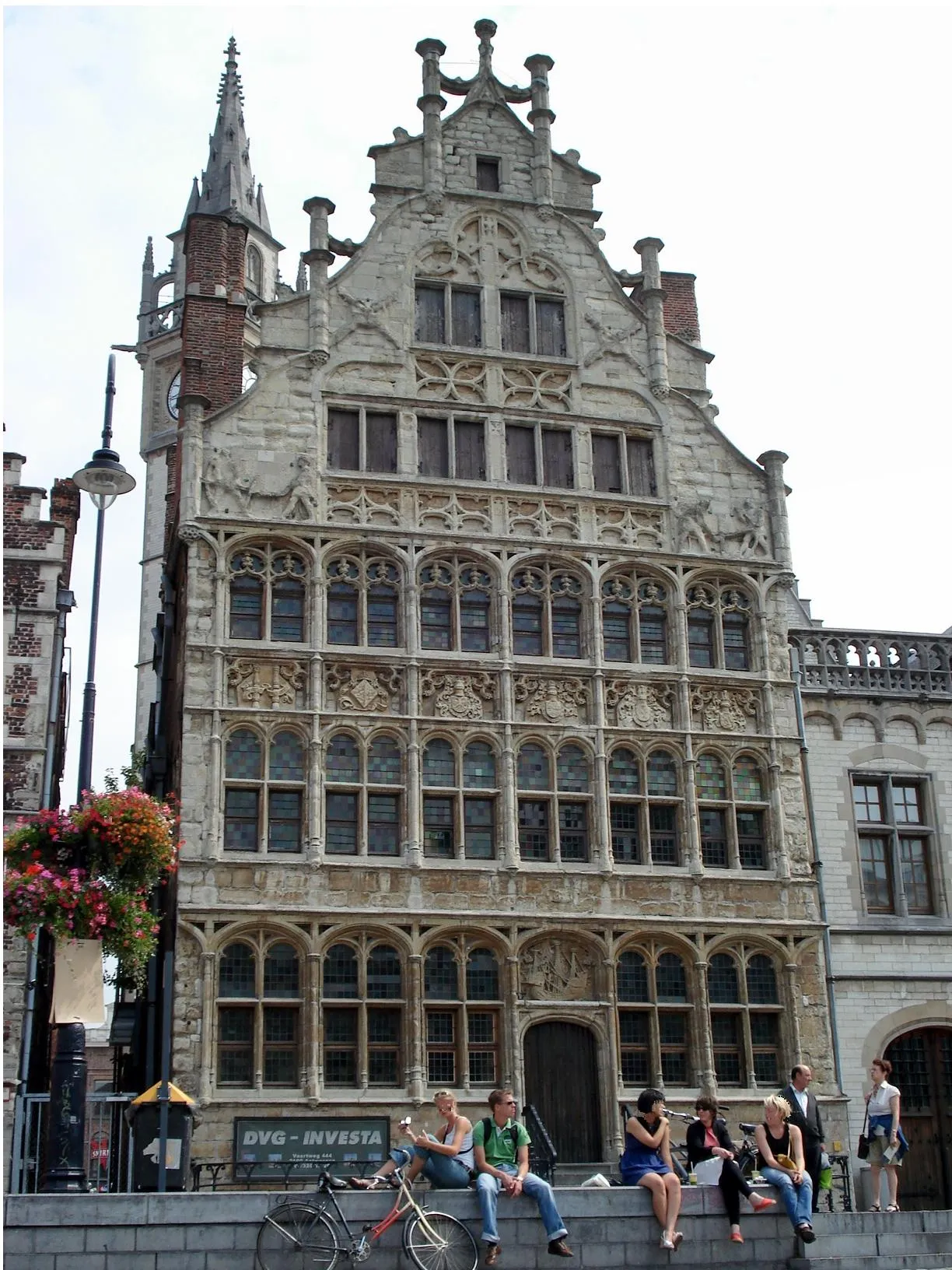
Gildehuis der Vrije Schippers
A gildhouse, formerly the property of the Molenaarsgilde, featuring a beautiful facade ornated with wapenschilden, devies, and beelden, showcasing the activities of the Vrije Schippers' guild.
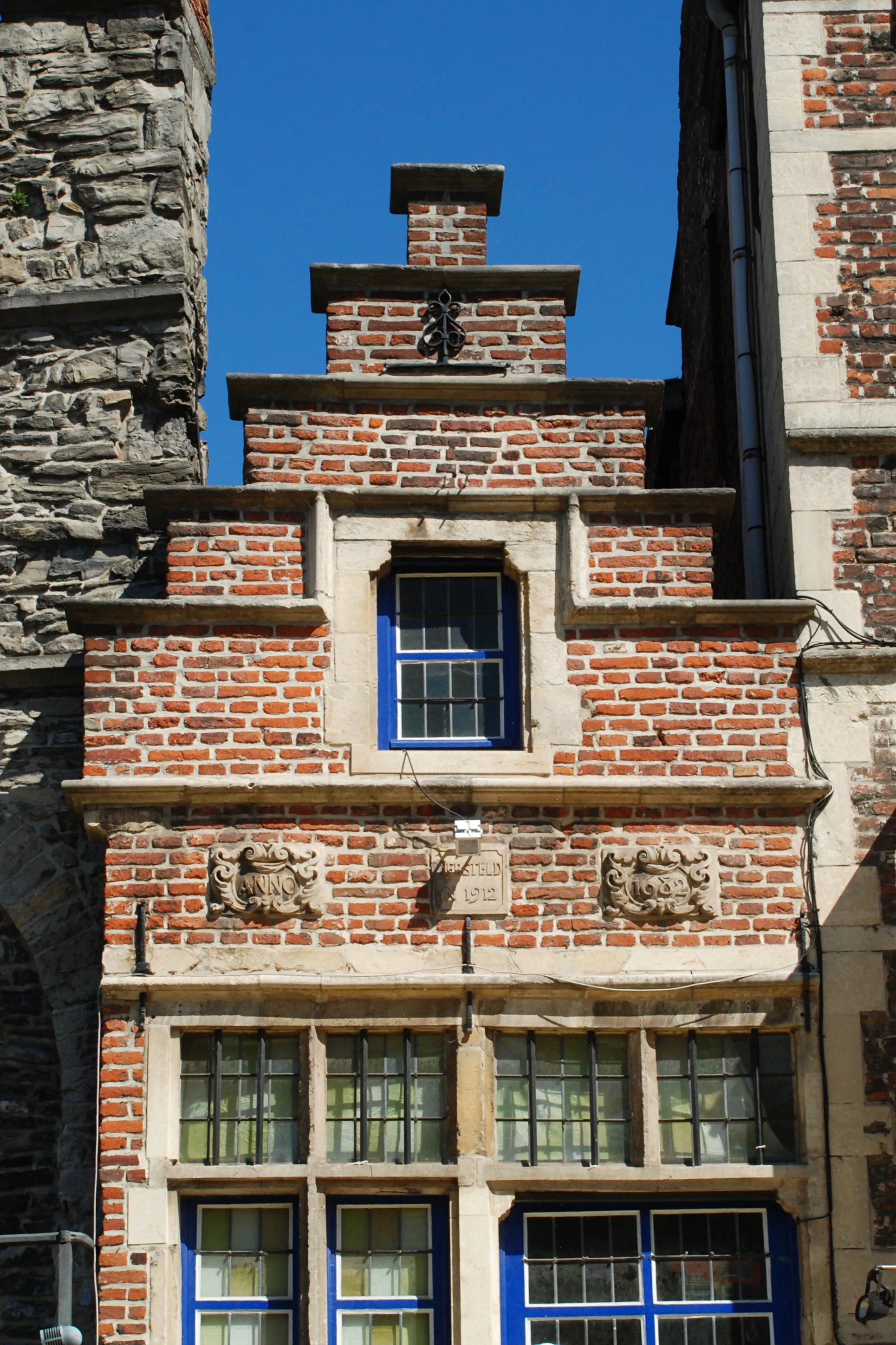
Tolhuisje
A 17th-century house, known as Tolhuisje, is the smallest house in Gent, standing on the Graslei. It dates back to the Middle Ages, served as a customs house, and has been restored and repurposed as a small café.
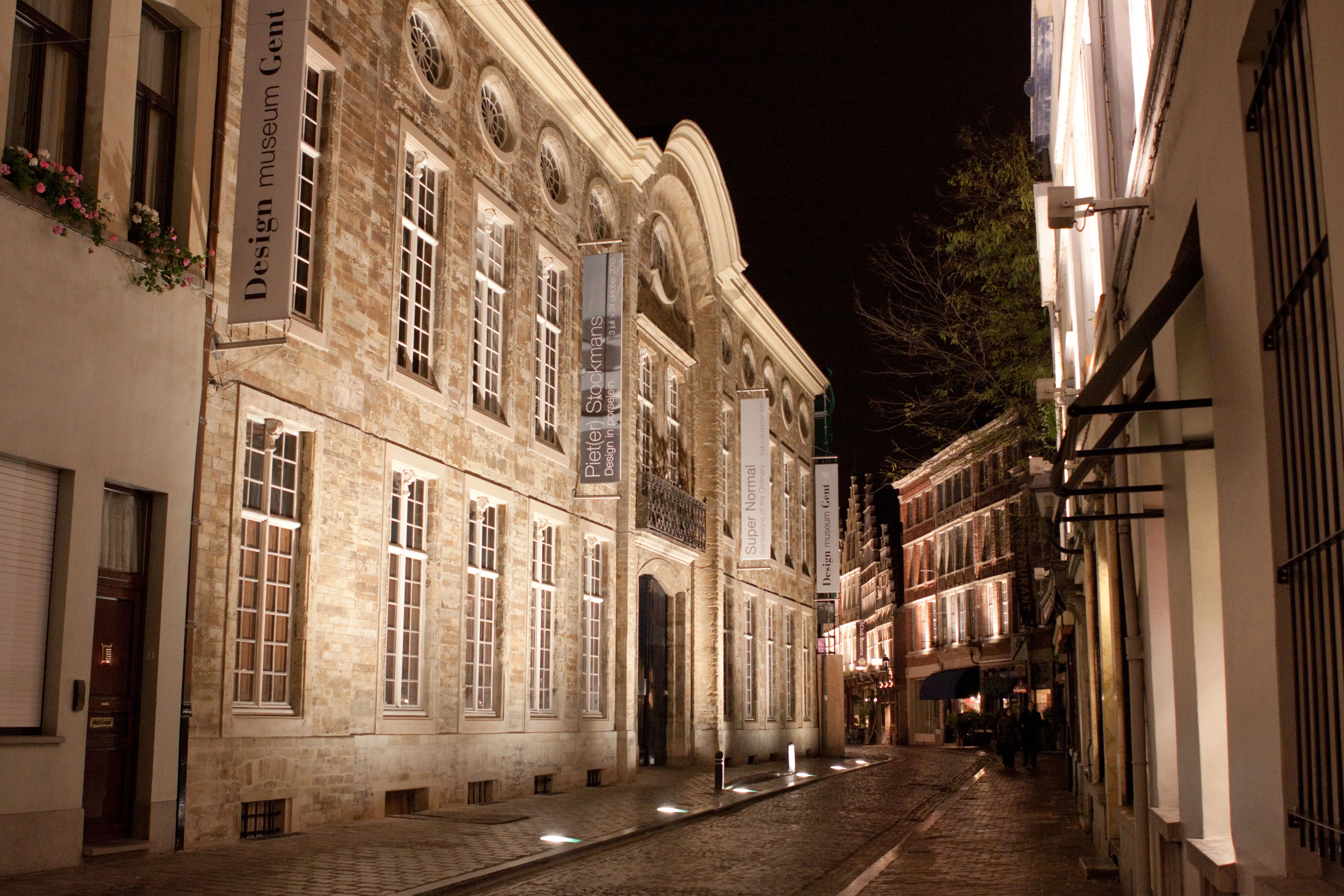
Design Museum Gent
A museum showcasing an international design collection with a focus on Belgian design, housed in an 18th-century mansion and a modern wing. The collection includes over 22,000 objects, spanning from 1450 to present, with a strong presence of Western European designs.
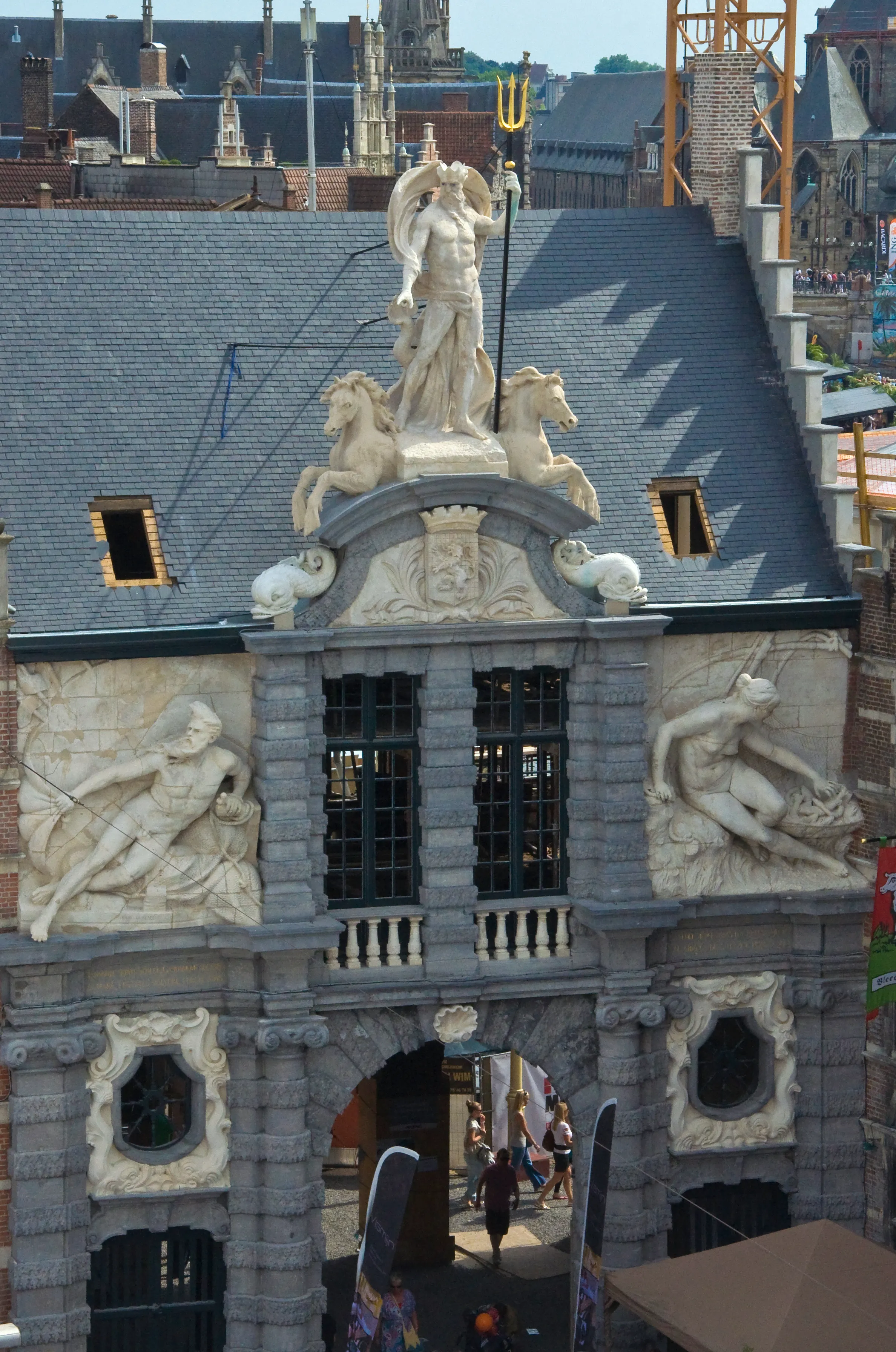
Oude vismijn
A mixed-use building of historical significance, the Oude Vismijn is one of the oldest markets in Gent, featuring a characteristic Gothic-style gatehouse and traditional stalls, originally opened in 1689.
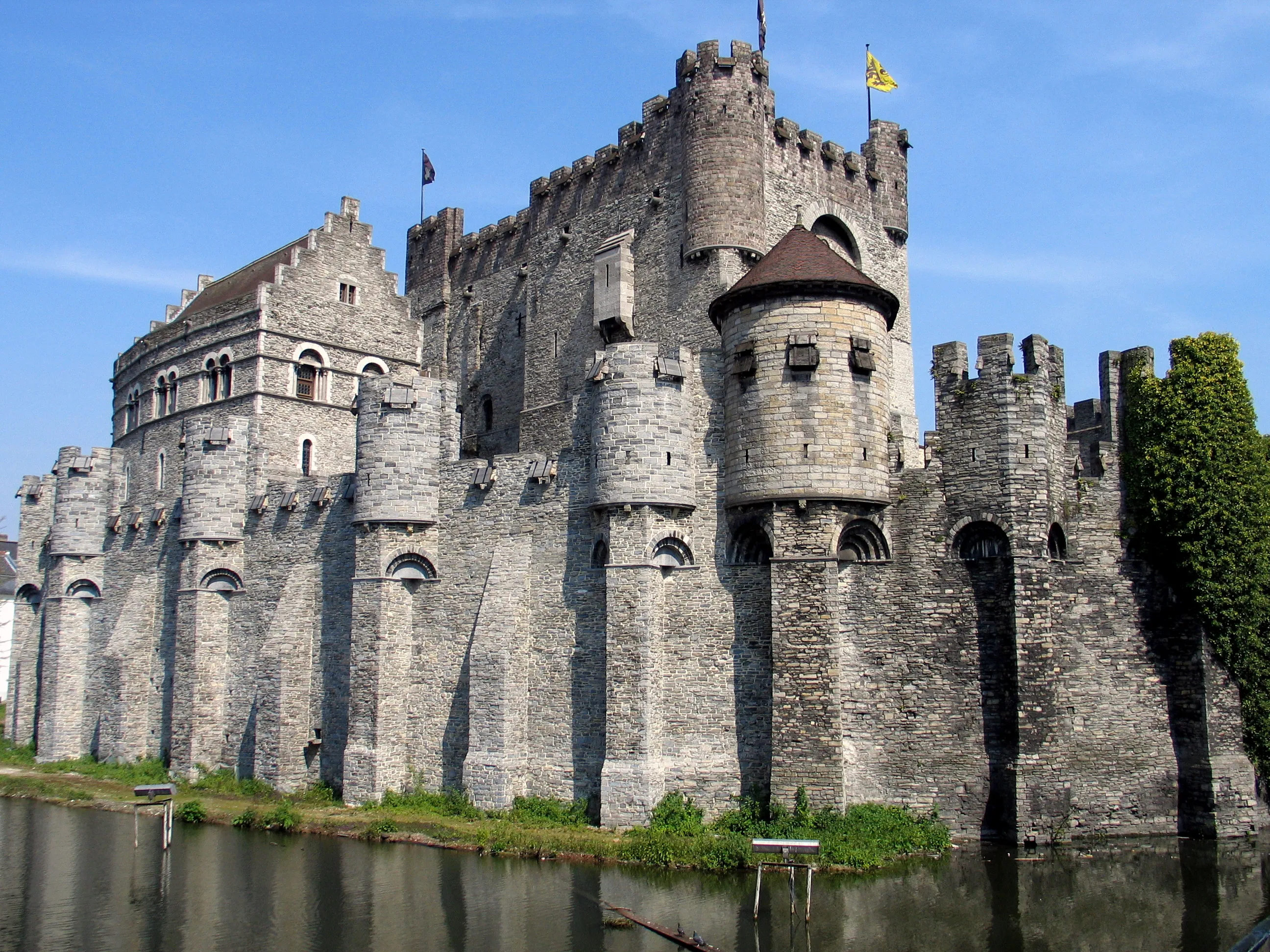
Gravensteen
A medieval castle and former residence of the Counts of Flanders, the Gravensteen features a large central donjon, surrounded by a fortified enceinte and a sizeable moat, now open to the public as a museum and major landmark.
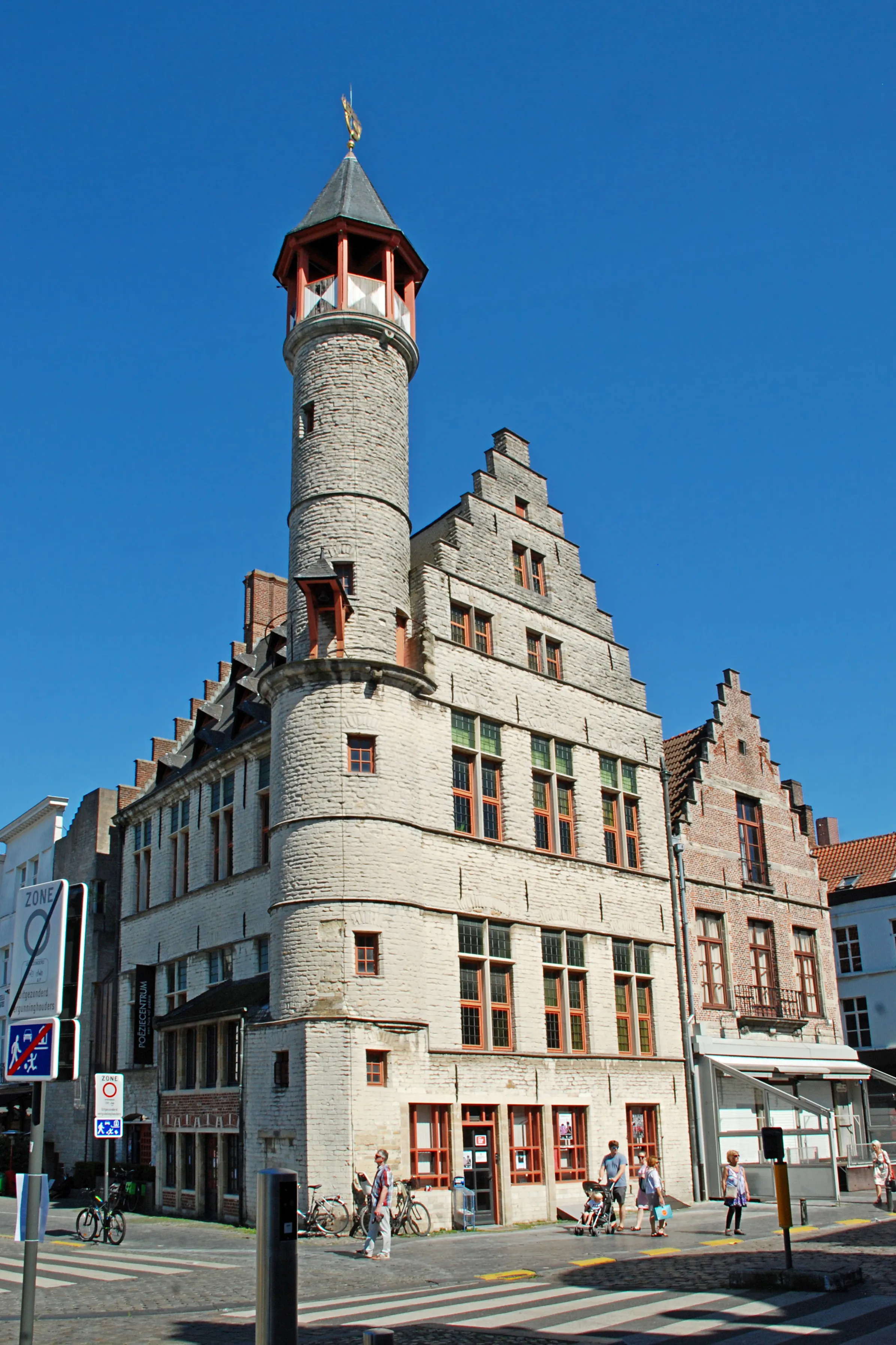
Toreken
A historic building, originally a nunnery, now known as the Toreken, situated on the corner of Vrijdagmarkt and Kammerstraat, housing the Poëziecentrum since 2012. The building features a distinctive tower with a wind vane in the shape of Melusine.
Download App
Experience this tour and many more with our mobile app. Available for iOS and Android.
Audio Preview
Tour Map
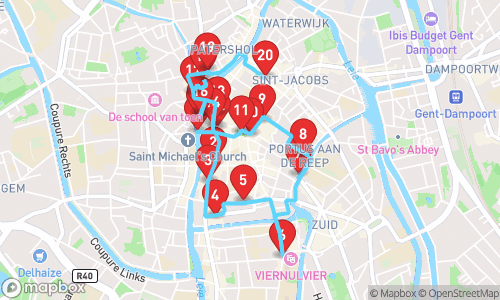
Quick Facts
- ✓GPS-guided navigation
- ✓Professional audio narration
- ✓Offline maps available
- ✓Premium content included
Why Choose This Tour
Expert Local Guide
Narrated by Jenny Multilingual, specializing in general tourism
Flexible Timing
Take the tour at your own pace, any time of day
